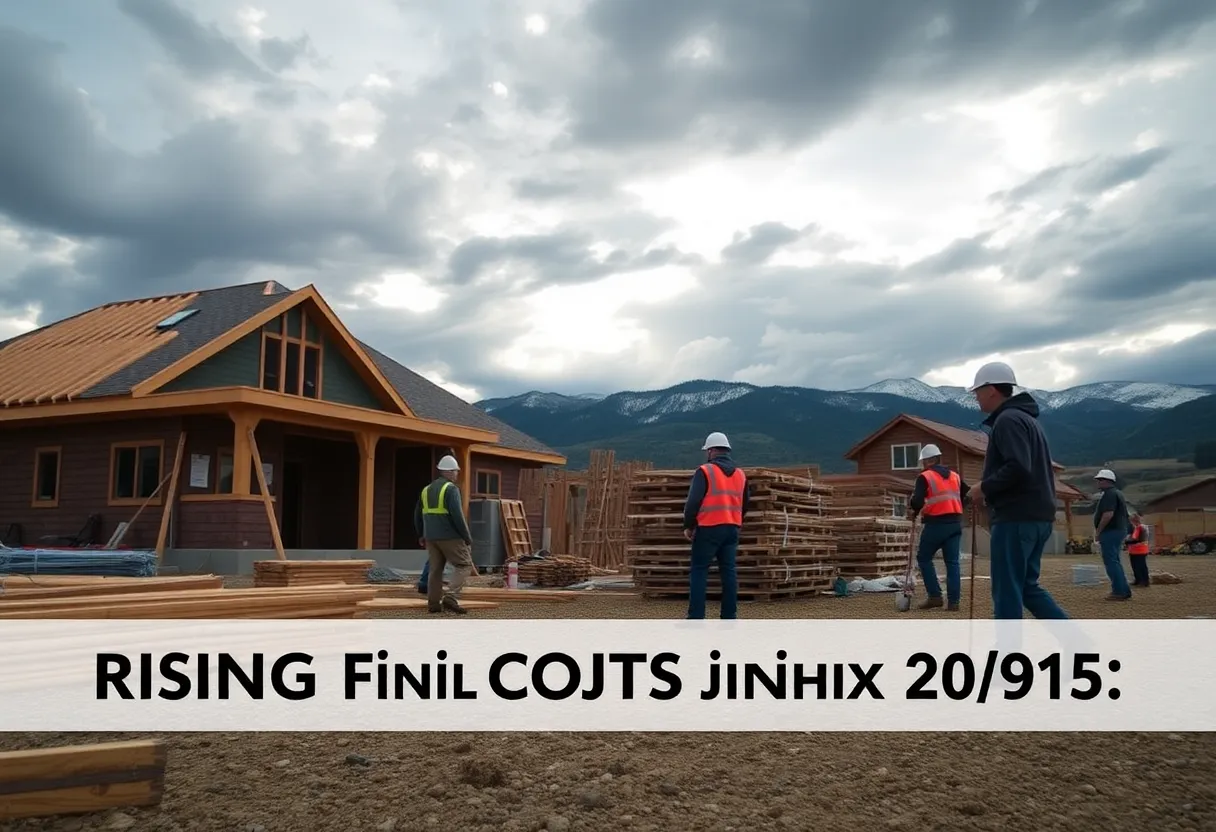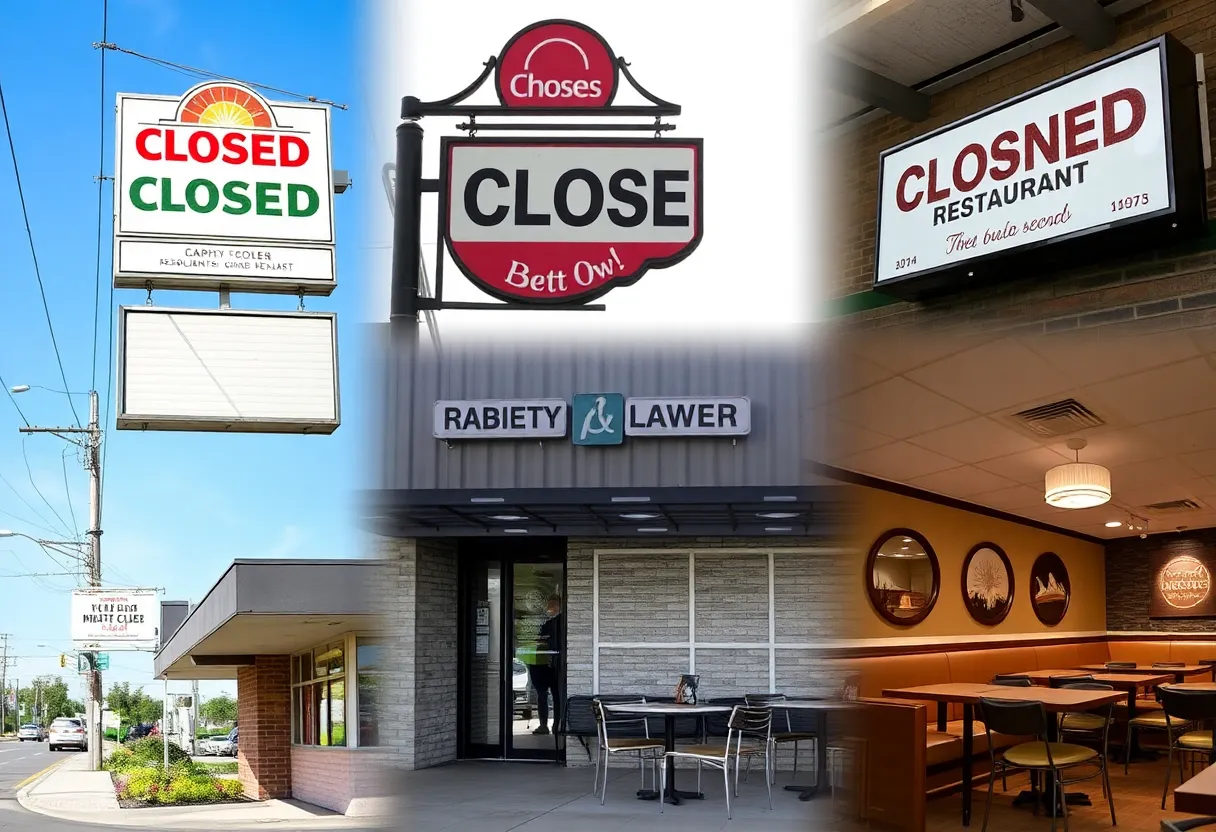Colorado, September 28, 2025
News Summary
The construction sector in Colorado faces significant challenges due to a dramatic increase in tariffs that have surged from 3% to 21%. This rise has raised costs for materials, squeezing profit margins and dampening developer sentiment. The construction industry, which contributed $33 billion to the state’s economy and employed over 190,000 workers in the previous year, is now experiencing elevated project costs and a slowdown in housing permits. As affordable housing becomes increasingly critical, concerns grow about the long-term impact of these developments on the economy and housing availability.
Denver, Colorado — The construction sector in Colorado is confronting significant challenges as rising tariffs and increasing material costs dampen developer sentiment and squeeze profit margins. A report released by the Colorado Office of State Planning & Budget on September 4, 2025, underscores that escalating tariffs are driving up expenses for both businesses and consumers across the state.
According to the report, tariffs have surged from an average of 3% in 2024 to an alarming 21% in 2025, a sevenfold increase that marks the highest level seen in over a century, reminiscent of tariff levels in 1910. This spike in tariffs is significantly impacting key industries including construction, agriculture, durable and nondurable goods, energy, health care, and technology, which collectively account for over 90% of Colorado’s international trade.
In 2024, the Colorado construction industry played a crucial role in the state’s economy, contributing $33 billion, or 6%, to the gross domestic product (GDP) and providing jobs for more than 190,000 workers across over 22,000 businesses. On the Western Slope region, construction represents 9% of the area’s GDP and 10% of its employment.
The increased costs for construction materials, particularly steel, aluminum, and copper, have surged by 20-40% compared to 2020 levels. Additionally, approximately 7% of the materials used in residential construction are imported, leading to project costs that are currently 15-25% higher than they were five years ago. Construction materials constitute 35-50% of total construction costs for homes, causing considerable concern regarding limited construction activity as a result of reduced demand and elevated capital costs.
Forecasts for housing construction permits in 2025, initially projected at a 3.9% increase, have now been revised down to just 0.5%, with predictions indicating that levels may plateau near last year’s figures. This reduction in construction activity is further exacerbating the existing housing shortages in rural Colorado. Although the state’s housing deficit has decreased from a peak of 140,000 in 2019 to 106,000 in 2023, the need for affordable housing remains critical.
Governor Jared Polis has voiced concern that rising tariffs are inflating costs for consumers and negatively impacting the economy, forcing families into difficult financial decisions. A recent ruling from a U.S. federal appeals court also highlighted that the executive branch might lack authority over many of the tariffs currently in effect, with a decision regarding their future expected by October 14, 2025.
Areas particularly likely to experience the ramifications of these tariffs include Eagle, Garfield, and Mesa counties, along with the Denver Metro Area, where the economic effects of material cost increases and reduced construction will be felt acutely.
Impact on the Construction Sector
- Tariff Increase: From 3% in 2024 to 21% in 2025.
- Construction Contribution: $33 billion to state GDP in 2024.
- Jobs: Employs over 190,000 workers in Colorado.
- Material Cost Surge: Increases of 20-40% for raw materials since 2020.
- Housing Deficit: Remains at 106,000, despite a reduction from 140,000 in 2019.
Conclusion
The outlook for the Colorado construction sector is increasingly uncertain as rising tariffs and material costs pose substantial challenges to developers and builders throughout the state. The repercussions extend beyond economic metrics, potentially endangering the availability of affordable housing for residents in the coming years.
FAQ Section
What are the current tariffs affecting Colorado’s construction materials?
The tariffs on construction materials have risen from an average of 3% in 2024 to 21% in 2025.
How much does the construction sector contribute to Colorado’s economy?
The construction industry contributed $33 billion, or 6%, to Colorado’s GDP in 2024.
How many workers are employed in the Colorado construction industry?
There are over 190,000 workers employed across more than 22,000 businesses in the construction sector in Colorado.
What has been the impact of increased material costs since 2020?
Raw material costs have increased by 20-40%, leading to project costs being 15-25% higher than five years ago.
Has the housing deficit in Colorado changed over the years?
The housing deficit has decreased from a peak of 140,000 in 2019 to 106,000 in 2023, but the need for affordable housing remains critical.
Deeper Dive: News & Info About This Topic
HERE Resources
Nevada Job Market Sees Decline with Loss of 3,800 Jobs
Labor Shortages and Rising Costs Pressuring Small Construction Firms
New Richmond Launches Liberty Landing Project
Construction Industry Faces Significant Challenges Ahead
Trump Administration Considers Tariff Exclusions for Housing Supplies
Bus Driver Shortage Forces Closure of Two Schools in Susquehanna Township
Belpre City Schools Advances $45.7 Million Campus Project
Economic Data and Federal Reserve Meeting Influence Real Estate Market
Vice President J.D. Vance Celebrates Trump’s ‘One Big Beautiful Bill’ Passage
Manufacturing Boom in Pennsylvania’s Toy Industry
Additional Resources
- Vail Daily
- Google Search: construction tariffs
- Colorado Biz
- Wikipedia: Tariff
- Denver Post
- Encyclopedia Britannica: economics
Author: STAFF HERE PHILADELPHIA WRITER
The PHILADELPHIA STAFF WRITER represents the experienced team at HEREPhiladelphia.com, your go-to source for actionable local news and information in Philadelphia, Philadelphia County, and beyond. Specializing in "news you can use," we cover essential topics like product reviews for personal and business needs, local business directories, politics, real estate trends, neighborhood insights, and state news affecting the area—with deep expertise drawn from years of dedicated reporting and strong community input, including local press releases and business updates. We deliver top reporting on high-value events such as Mummers Parade, Philadelphia Flower Show, and Thanksgiving Day Parade. Our coverage extends to key organizations like the Greater Philadelphia Chamber of Commerce and United Way of Greater Philadelphia, plus leading businesses in telecommunications, food services, and healthcare that power the local economy such as Comcast, Aramark, and Children's Hospital of Philadelphia. As part of the broader HERE network, we provide comprehensive, credible insights into Pennsylvania's dynamic landscape.





